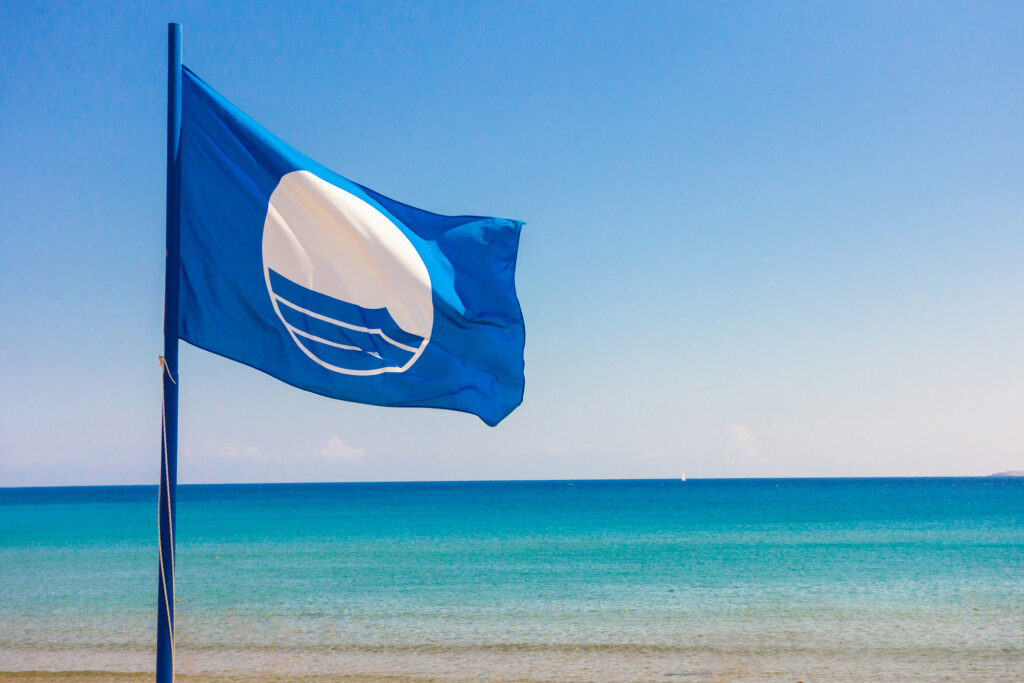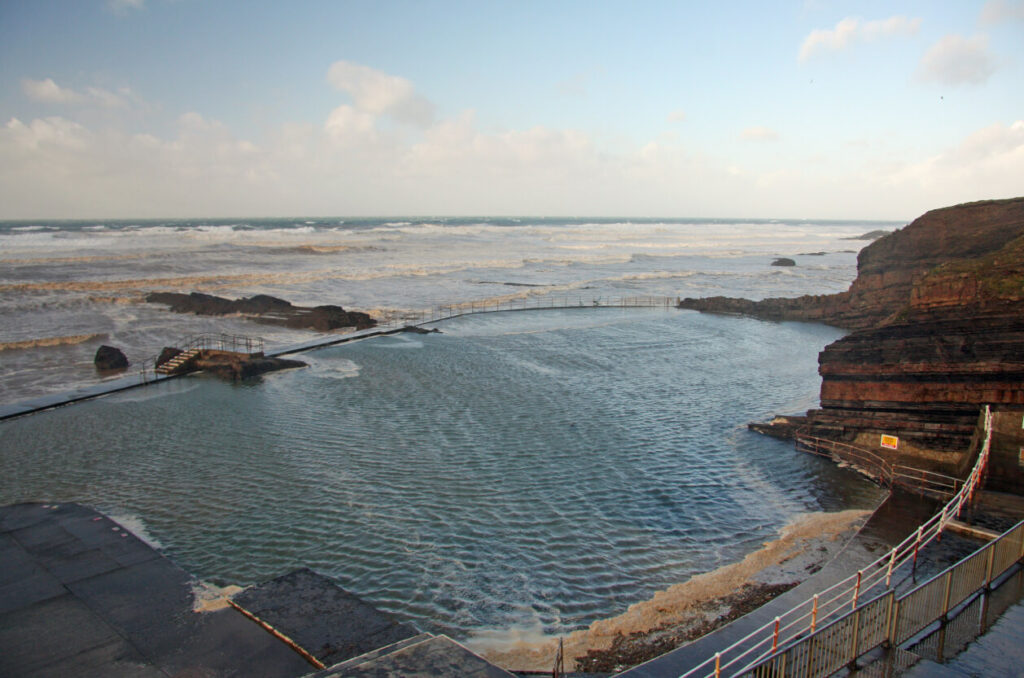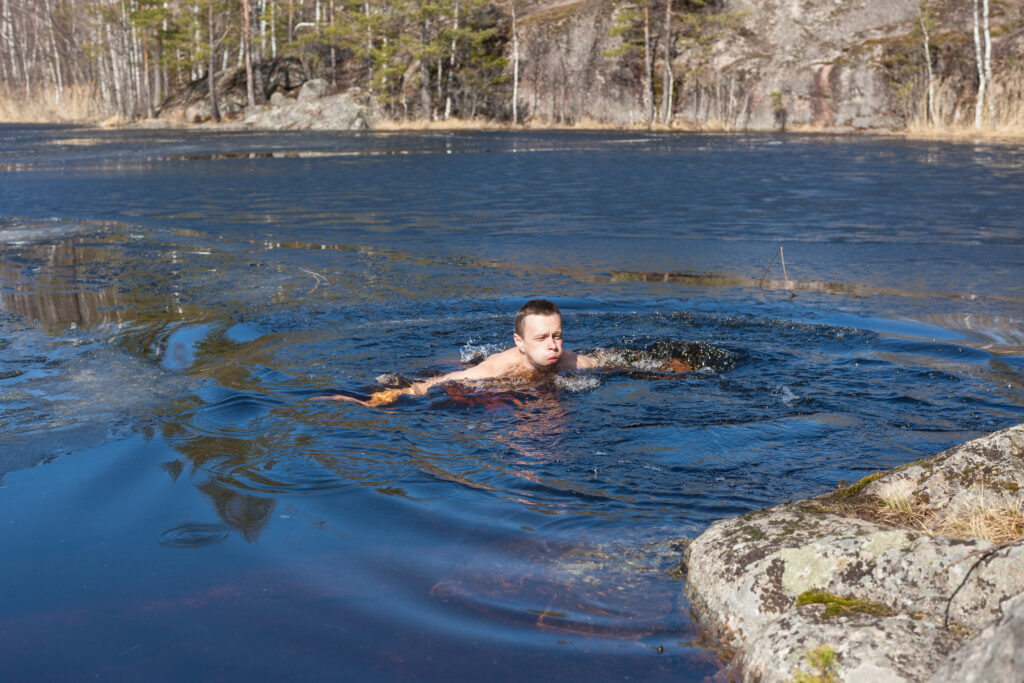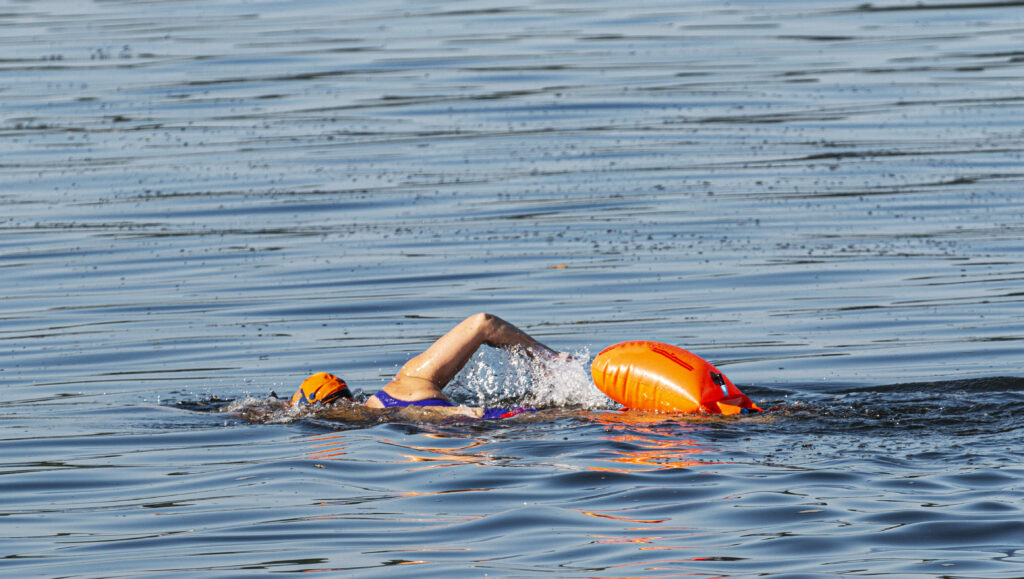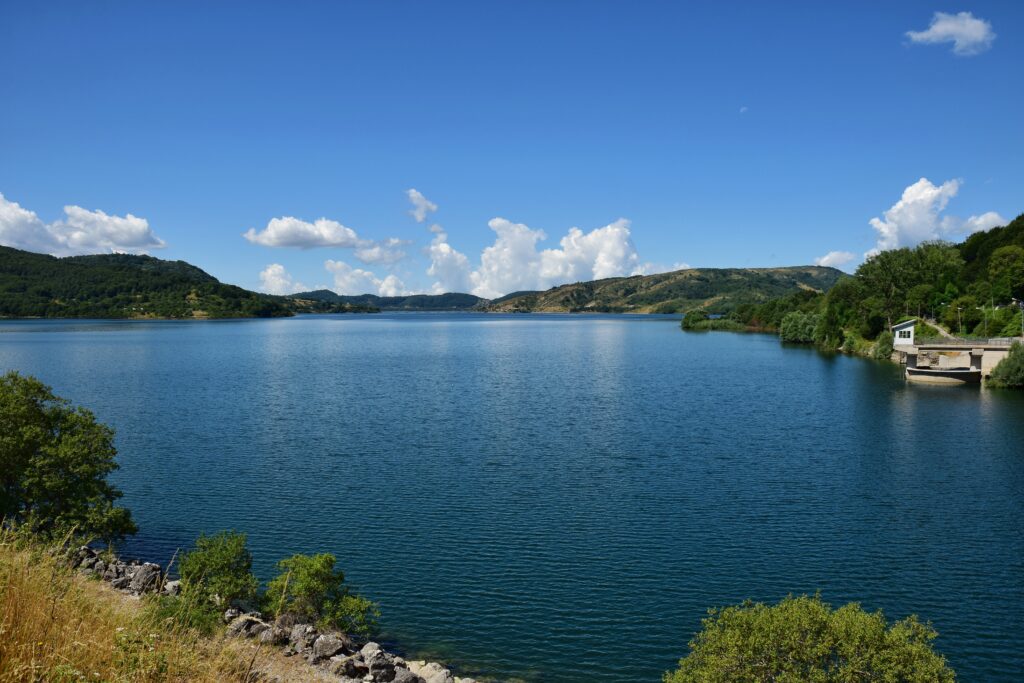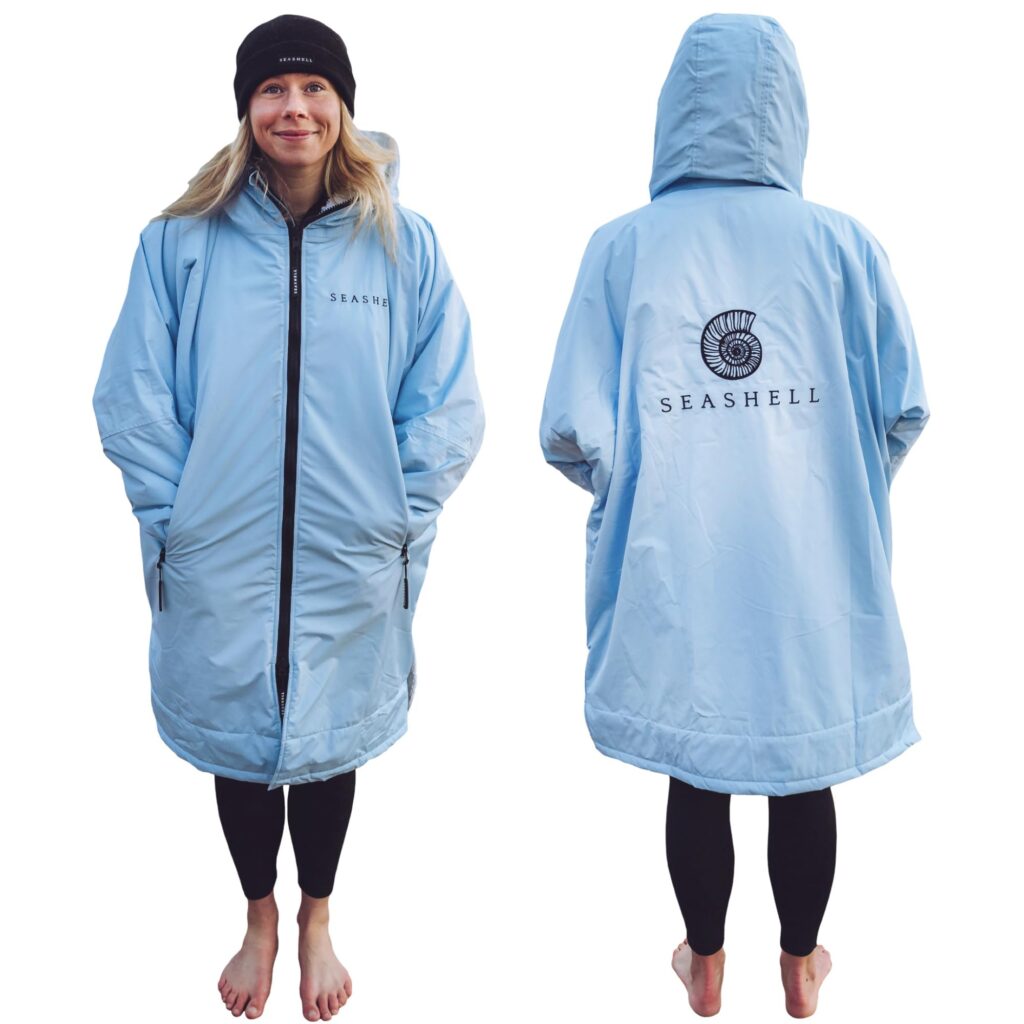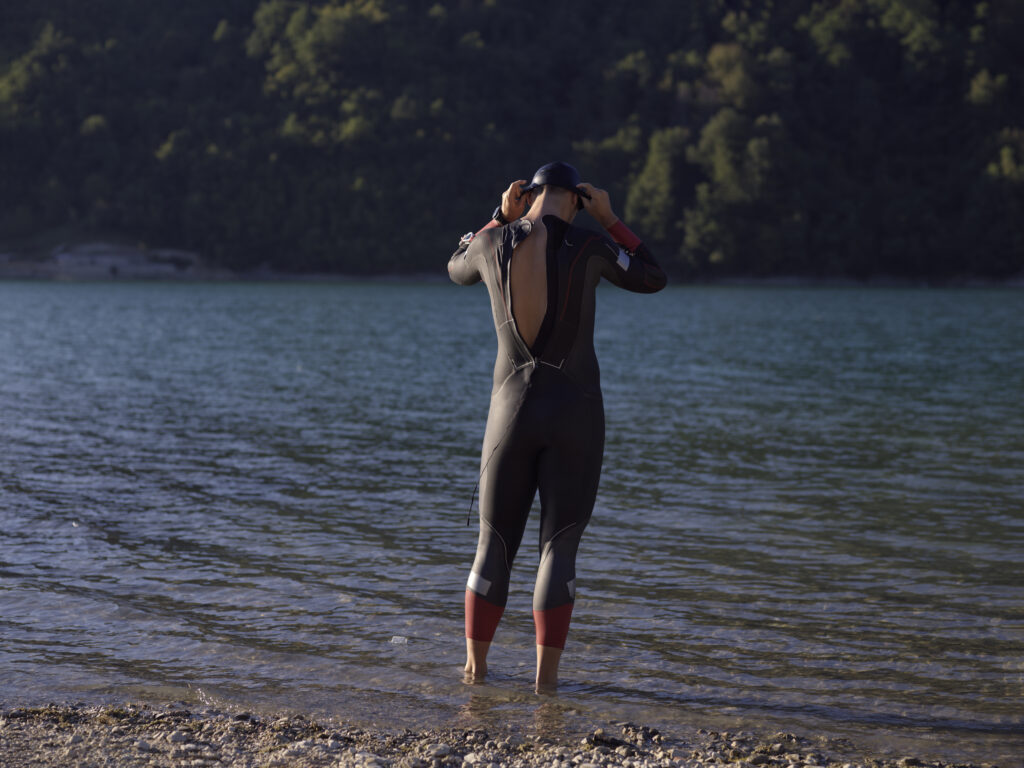The Blue Flag system for beaches is a globally recognised mark of quality. It shows that a beach meets high standards for safety, cleanliness, and environmental care. Beaches with a Blue Flag must pass strict tests each year.
The Blue Flag programme checks beaches for water quality, safety measures, environmental management, and services. Clean water is key. Beaches need to have lifeguards and first aid. They must also teach visitors about local nature. Good toilets and rubbish bins are a must too.
The Blue Flag helps people pick safe, clean beaches for their holidays. It pushes beach managers to keep improving. This system makes beaches better for both humans and wildlife. When you see a Blue Flag flying, you can feel sure about your beach day.
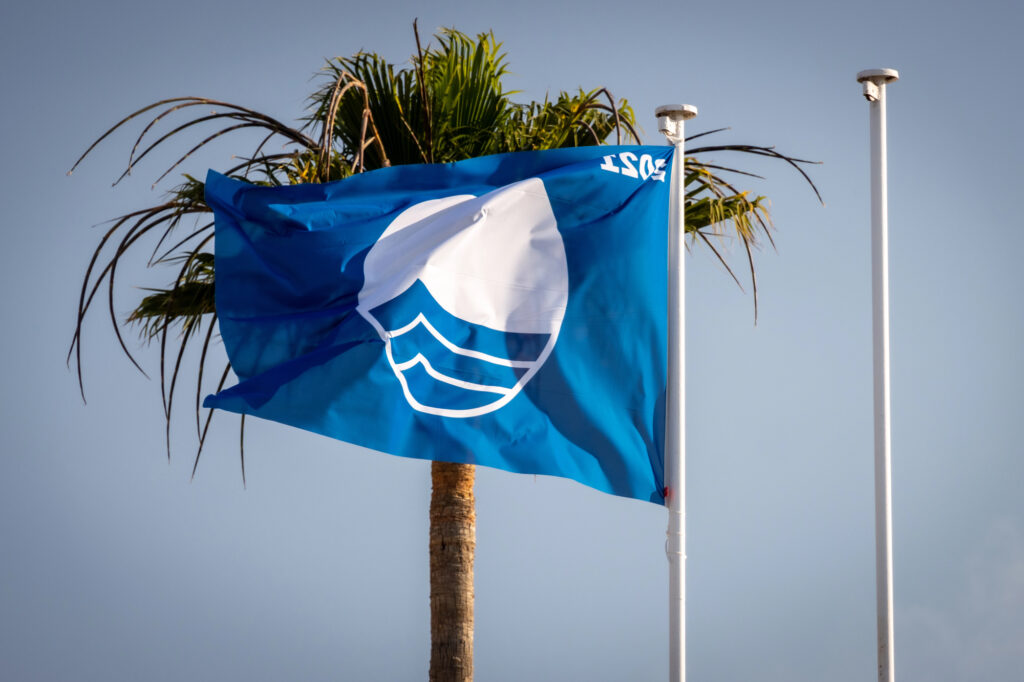
Overview of the Blue Flag Programme
The Blue Flag Programme recognises beaches and marinas that meet high standards for water quality, environmental management, safety, and education. It aims to promote sustainable coastal tourism and raise awareness about marine conservation.
Blue Flag Origins and Development
The Blue Flag Programme began in France in 1985. It started as a way to encourage clean beaches and safe swimming areas. The programme spread across Europe in 1987 and went global in 2001 when South Africa joined.
Today, the Blue Flag flies at beaches, marinas, and sustainable boating operators worldwide. It has become a symbol of excellence that tourists look for when choosing holiday destinations.
The programme’s growth shows its success in promoting environmental care and sustainable tourism practices. Each year, more sites apply for the award, pushing for higher standards in coastal management.
Foundation for Environmental Education (FEE)
The Foundation for Environmental Education (FEE) runs the Blue Flag Programme. FEE is a non-profit, non-governmental organisation that works to promote sustainable development through education.
FEE has members in 77 countries. These members help run the Blue Flag Programme locally. They work with beaches and marinas to meet the Blue Flag criteria.
FEE sets the standards for the Blue Flag award. These standards cover:
- Water quality
- Environmental education
- Environmental management
- Safety and services
The organisation reviews these criteria regularly to ensure they remain relevant and challenging.
The Importance of the Blue Flag Award
The Blue Flag is a highly recognised award for beaches and marinas worldwide. It shows that a site meets strict standards for quality and sustainability.
For beach-goers, the Blue Flag means:
- Clean water for swimming
- Well-managed beaches with good facilities
- Environmental education programmes
- Safety measures in place
For local communities, the award can boost tourism and the local economy. It encourages authorities to improve beach management and invest in coastal areas.
The Blue Flag also helps protect marine environments. It promotes good practices in waste management, wildlife protection, and water conservation. This benefits both visitors and local ecosystems.
Criteria for Blue Flag Certification
The Blue Flag certification uses strict standards to assess beaches. These cover water quality, environmental care, safety measures, and accessibility for all visitors.
Water Quality Standards
Beaches must have excellent water quality to earn the Blue Flag. This means regular testing for harmful bacteria and pollutants. The water should be safe for swimming and other activities.
Tests check for E. coli and other germs that can make people ill. There are limits on how many of these can be present. The beach must meet these standards for the whole swimming season.
Clean water isn’t just nice – it’s crucial for health. Beaches that fail these tests can’t get the Blue Flag until they improve.
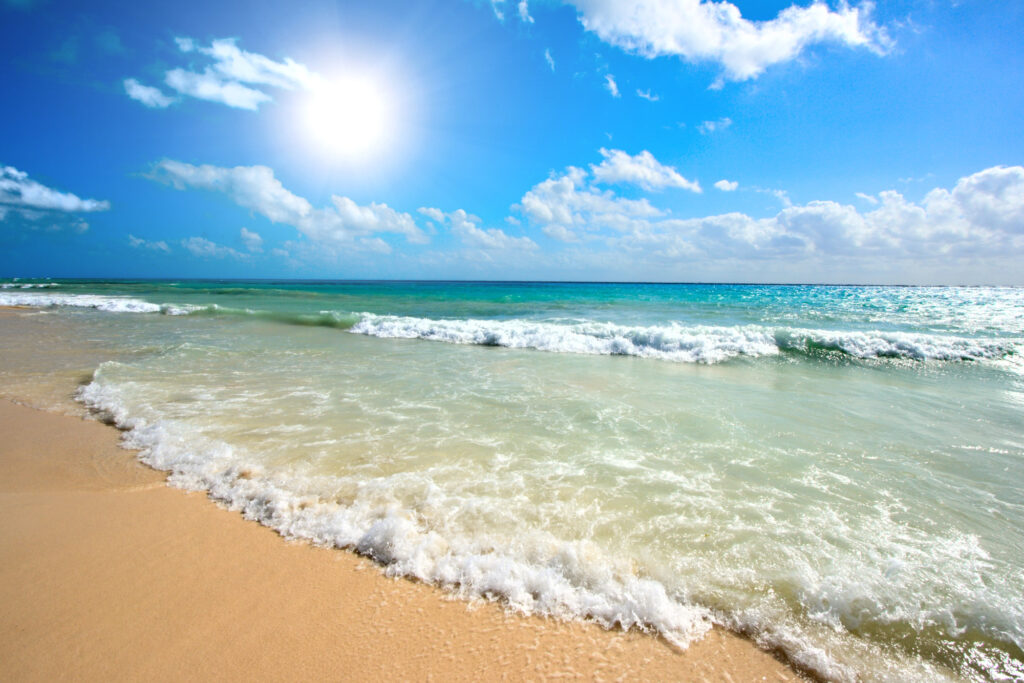
Environmental Management and Education
Blue Flag beaches must care for nature. They need plans to keep the area clean and protect local plants and animals. This includes proper rubbish bins and regular litter picks.
Beaches should also teach visitors about the environment. They must offer at least five environmental education activities each year. These might be nature walks, talks about sea life, or clean-up events.
Signs should explain local ecosystems and how to protect them. The goal is to help people enjoy nature without harming it.
Safety and Services Provision
Safety is a top priority for Blue Flag beaches. They must have lifeguards on duty during busy times. Clear signs should show when it’s safe to swim and mark any dangerous areas.
First aid points and emergency phones are required. There should be easy access for emergency vehicles if needed.
Clean toilets and drinking water must be available. These facilities should be well-maintained and checked often.
Beach staff should be trained to handle problems and keep visitors safe. They need to know what to do in emergencies.
Facility Accessibility
Blue Flag beaches aim to welcome everyone. This means having features that help people with disabilities enjoy the beach too.
Ramps or boardwalks should make it easy to reach the beach with wheelchairs or pushchairs. There should be accessible toilets and changing rooms.
Some beaches offer special chairs that can go in the water. Others might have audio guides for visually impaired visitors.
Clear signs using simple pictures can help people understand beach rules and facilities. The goal is to make sure everyone can have a good day out at the beach.
The Significance of the Blue Flag for Beaches and Marinas
The Blue Flag is a prestigious award that brings numerous benefits to beaches and marinas. It influences public trust, promotes environmental stewardship, and drives tourism and economic growth in coastal areas.
Public Perception and Trust
The Blue Flag is a globally recognised symbol of quality and cleanliness for beaches and marinas. When visitors see the Blue Flag flying, they can trust that the beach meets high standards for water quality, safety, and environmental management.
This certification builds confidence among beachgoers. They know they can enjoy clean sand, clear water, and well-maintained facilities. The Blue Flag also signals that the beach is safe for swimming and other water activities.
For marinas, the Blue Flag indicates excellent services and environmentally friendly practices. Boaters can feel assured that these marinas follow strict guidelines for waste management and water quality.
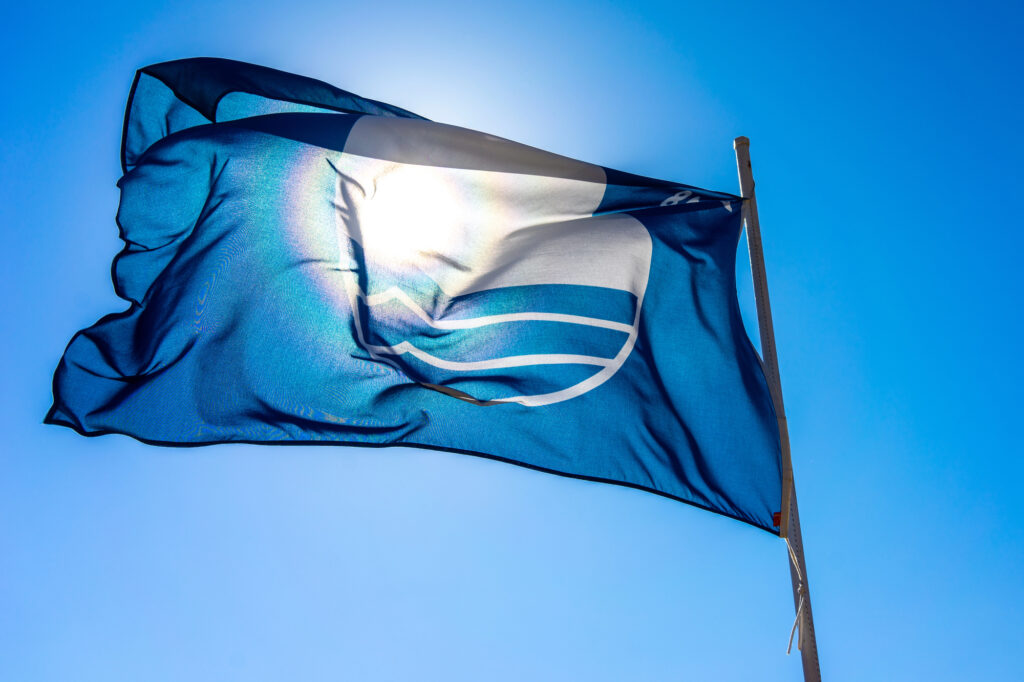
Environmental Benefits
Blue Flag beaches and marinas must meet rigorous environmental criteria. This leads to significant positive impacts on local ecosystems.
These sites must:
- Implement effective waste management systems
- Promote recycling
- Protect sensitive habitats and wildlife
- Educate visitors about local environmental issues
The Blue Flag programme encourages beach and marina managers to continually improve their environmental practices. This results in cleaner coastal areas and better-preserved marine habitats.
Regular water quality testing ensures that pollution is quickly identified and addressed. This protects both human health and marine life.
Tourist and Economic Impact
Blue Flag status can significantly boost tourism in coastal areas. Many travellers seek out Blue Flag beaches for their holidays, knowing they’ll find clean, safe, and well-managed destinations.
This increased tourism brings economic benefits to local communities. It can lead to:
- More jobs in the hospitality and service sectors
- Increased revenue for local businesses
- Higher property values in nearby areas
Spain, with 628 Blue Flag beaches, has seen substantial economic gains from its commitment to the programme. Other countries are following suit, recognising the economic potential of Blue Flag certification.
For marinas, the Blue Flag can attract more boaters and yacht owners. This can lead to increased berth rentals and higher spending in local shops and restaurants.
Global Reach of the Blue Flag Programme
The Blue Flag programme has expanded significantly since its inception, now spanning multiple continents and countries. This global reach has led to widespread adoption of stringent beach and marina standards worldwide.
Blue Flag Expansion and Global Impact
The Blue Flag programme began in France in 1985 and quickly spread across Europe. It launched outside Europe in 2001 when South Africa joined. Today, the programme has a truly global presence.
Countries from the Caribbean to New Zealand now participate. The programme’s expansion has raised beach and marina standards globally. It has increased awareness of environmental issues and beach safety.
Blue Flag’s impact extends beyond tourism. It encourages local authorities to improve water quality and coastal management. The programme also promotes environmental education and sustainable practices.
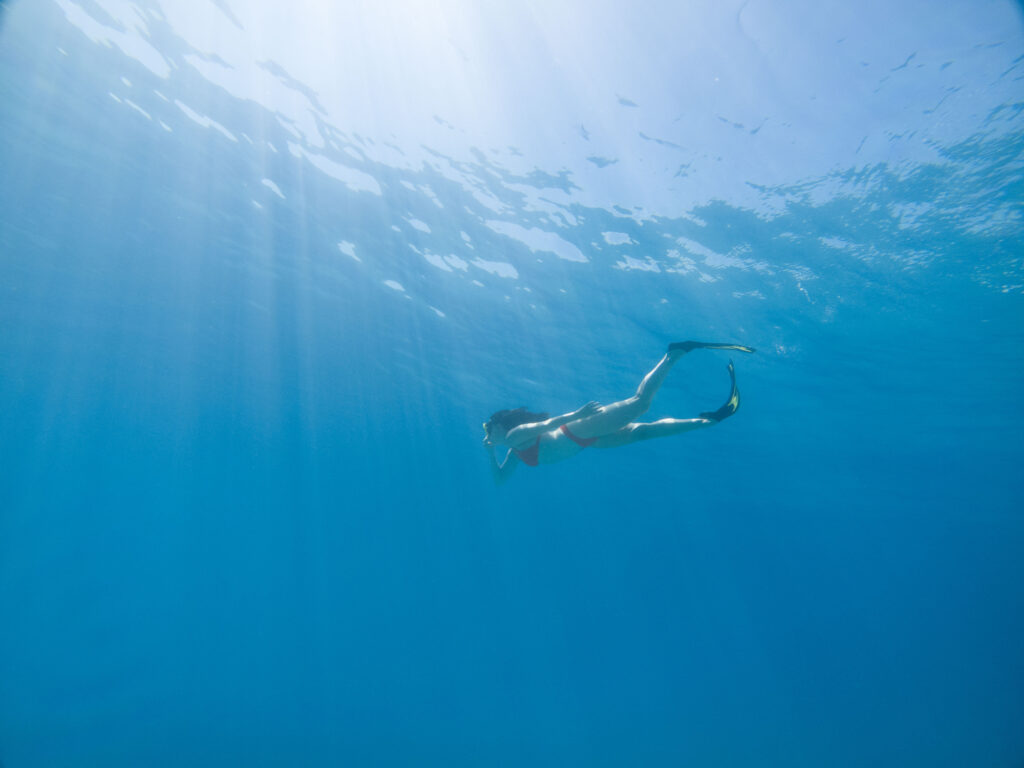
Notable Participating Countries and Regions
Europe remains a stronghold for Blue Flag beaches. Spain, Greece, France, and Turkey boast numerous Blue Flag sites. The UK, Ireland, and Portugal also have significant participation.
Outside Europe, Blue Flag has gained traction in diverse regions. South Africa was an early adopter in the Southern Hemisphere. Canada and Brazil have embraced the programme in the Americas.
In the Mediterranean, Morocco and Tunisia have joined European countries in flying the Blue Flag. The Caribbean, including the Dominican Republic and Puerto Rico, has also seen growth in Blue Flag beaches.
New Zealand represents the programme’s reach in Oceania. This global spread demonstrates Blue Flag’s adaptability to different coastal environments and cultures.
Operational Aspects and Compliance
The Blue Flag programme involves a structured process for awarding and maintaining beach certifications. This includes annual cycles, rigorous auditing, and voluntary participation by beach operators.
Award Process and Annual Cycle
The Blue Flag award cycle follows a yearly schedule. Beaches must apply for the award by 1 November each year. Applications are then reviewed by a national jury and an international jury.
Successful beaches receive their Blue Flag status on 5 June, coinciding with World Environment Day. The flag is valid for one bathing season or one calendar year in areas with year-round seasons.
Beach operators must ensure continuous compliance with Blue Flag criteria throughout the award period. This includes maintaining water quality, safety standards, and environmental management practices.
Auditing and Compliance
Blue Flag beaches undergo regular audits to ensure ongoing compliance. These audits can be announced or unannounced.
Key aspects of compliance include:
- Water quality monitoring
- Safety measures and lifeguard presence
- Environmental education activities
- Proper waste management
- Accessibility features
If a beach fails to meet the criteria during the season, the Blue Flag may be withdrawn temporarily or permanently. Beach operators must address any issues promptly to maintain their status.
Fee and Voluntary Nature of Awards
Participation in the Blue Flag programme is entirely voluntary. Beach operators choose to apply based on their commitment to environmental and safety standards.
There is a fee associated with the Blue Flag application and award process. This fee helps cover the costs of:
- Application review
- Site visits and audits
- Programme administration
The fee structure may vary by country and beach size. Despite the cost, many beach operators find value in the Blue Flag certification as it can boost tourism and demonstrate environmental responsibility.
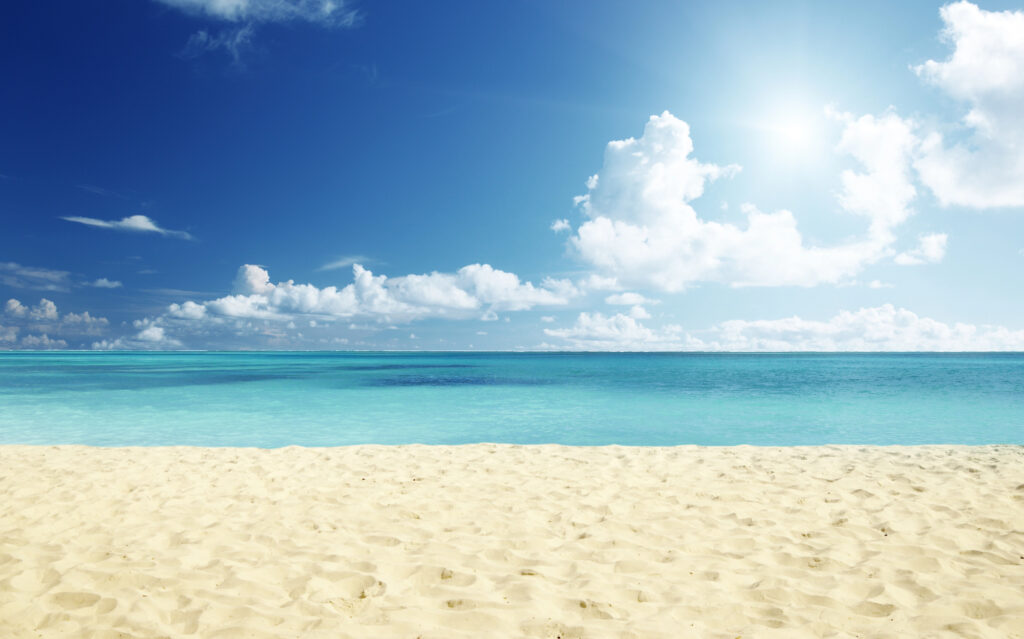
Educational and Community Engagement
The Blue Flag system fosters learning and community participation. It helps people understand nature and take care of beaches.
Environmental Education Programmes
Blue Flag beaches offer fun ways to learn about the sea. Schools can visit for outdoor lessons. Kids might explore rock pools or learn about sea creatures. Adults can join guided walks to spot birds and plants.
Beach staff teach visitors how to protect the coast. They explain why it’s important not to litter. Signs give facts about local wildlife and habitats.
Some beaches have nature centres. These showcase the area’s plants and animals. Visitors can touch sea life in tanks or use microscopes to see tiny creatures.
Community Involvement
Local people play a big role in keeping Blue Flag beaches nice. They join beach clean-ups to remove rubbish. This helps wildlife and makes the beach look better.
Volunteer groups watch for pollution or injured animals. They report problems to beach managers. Some help count birds or sea turtles.
Beach committees include locals. They help make choices about the beach. This might mean picking new facilities or planning events.
Shops and cafes near the beach often take part too. They might stop using plastic straws or bags to cut waste.
Promoting Local Ecosystems and Wildlife
Blue Flag beaches teach people about nearby nature. They explain how dunes, cliffs, and sea grass are important. Signs show what lives in each area.
Beach staff point out rare plants or animals. They tell people how to watch wildlife without harm. This might mean staying away from nesting birds.
Some beaches have nature trails. These lead through different habitats. Walkers can see how the landscape changes from sea to land.
Beach talks cover topics like tides or storms. They show how these shape the coast. People learn why healthy seas matter for fish and sea life.
Challenges and Future Prospects
The Blue Flag system faces several hurdles as it aims to maintain high beach standards worldwide. Key issues include environmental threats, the need for innovative certification methods, and efforts to expand the programme’s reach.
Environmental Challenges and Climate Change
Climate change poses significant risks to Blue Flag beaches. Rising sea levels threaten coastal areas, potentially altering shorelines and reducing beach space. Extreme weather events like storms and floods can damage beach infrastructure and erode sand.
Water quality is another concern. Warmer seas may lead to increased algal blooms, affecting swimming conditions. Plastic pollution continues to be a major issue, with microplastics found in sand and water.
Blue Flag beaches must adapt to these changes. This might involve creating natural buffers against erosion or improving waste management systems.
Innovations in Environmental Certification
To stay relevant, the Blue Flag programme needs to embrace new technologies. Drones could be used for beach monitoring, providing accurate data on litter and water quality.
Smart sensors could track real-time pollution levels, allowing for quick responses to environmental threats. Mobile apps might help beachgoers report issues and access information about beach conditions.
The certification process itself might evolve. Digital platforms could streamline applications and audits, making it easier for beaches to maintain their Blue Flag status.
Extending Reach and Increasing Awareness
While well-known in Europe, the Blue Flag programme aims to expand globally. This means adapting criteria to suit different coastal environments and cultures.
Education is crucial. Beach managers need training on sustainable practices. Public awareness campaigns can help visitors understand the importance of Blue Flag standards.
Partnerships with tourism boards and environmental groups could boost the programme’s profile. Social media campaigns might engage younger generations in beach conservation efforts.
Expanding to more inland beaches and marinas could also increase the Blue Flag’s impact on water quality and environmental education.
Frequently Asked Questions
The Blue Flag beach certification involves specific criteria, monitoring processes, and environmental standards. It offers benefits to beaches and provides a recognisable symbol for visitors.
What criteria must a beach meet to be awarded a Blue Flag?
To earn a Blue Flag, beaches must meet 27 specific criteria. These cover four main areas: water quality, environmental education, environmental management, and safety.
Water quality is a key factor. Beaches must have excellent bathing water that meets strict standards.
Environmental education programmes are required. Beaches must display information about local ecosystems and environmental issues.
How does the Blue Flag system impact environmental standards on beaches?
The Blue Flag system drives up environmental standards on beaches. It encourages better waste management and cleaner facilities.
Beaches must have recycling bins and regular litter picks. They are also required to promote sustainable transport options to visitors.
The programme raises awareness about coastal ecosystems. This helps protect local wildlife and plant life.
What are the principal benefits of a beach obtaining the Blue Flag certification?
Blue Flag certification brings several benefits to beaches. It often leads to increased visitor numbers and tourism revenue.
The award signals high environmental and safety standards. This can boost a beach’s reputation and attract eco-conscious travellers.
Local communities often see improved facilities and cleaner environments. The certification can also lead to better water quality in the area.
In what ways are Blue Flag beaches monitored and how often are they reassessed?
Blue Flag beaches undergo regular monitoring. Local authorities conduct frequent checks throughout the bathing season.
Water quality tests are carried out at least monthly. Safety measures and facilities are also checked regularly.
Full reassessments happen annually. Beaches must reapply for the Blue Flag each year to maintain their status.
Can the Blue Flag status of a beach be revoked, and under what circumstances?
Yes, Blue Flag status can be revoked. This happens if a beach fails to meet the required standards.
Reasons for revocation might include poor water quality results or failure to maintain facilities. Beaches that don’t address issues promptly can lose their flag.
In some cases, flags are temporarily lowered until problems are resolved.
How can visitors identify a Blue Flag beach, and what does the flag symbolise?
Visitors can spot Blue Flag beaches by looking for the distinctive blue flag flying at the beach. The flag features a white circle with a wave symbol.
The Blue Flag symbolises high standards of water quality, safety, and environmental management. It tells visitors the beach meets international criteria.
Information boards at Blue Flag beaches often display the current year’s certification.

